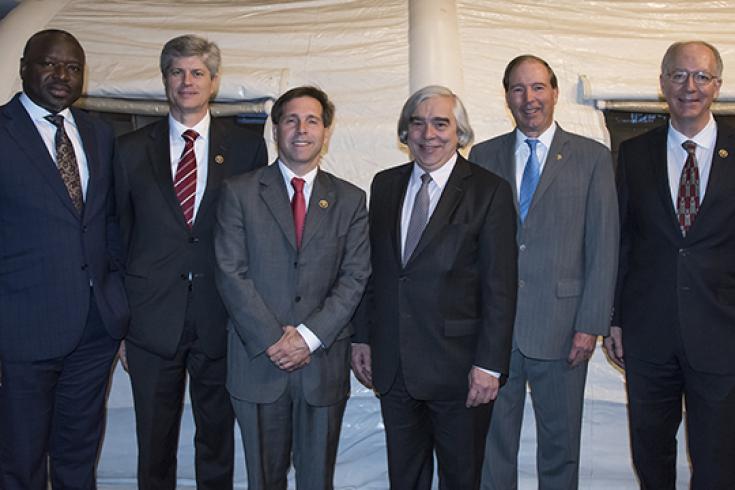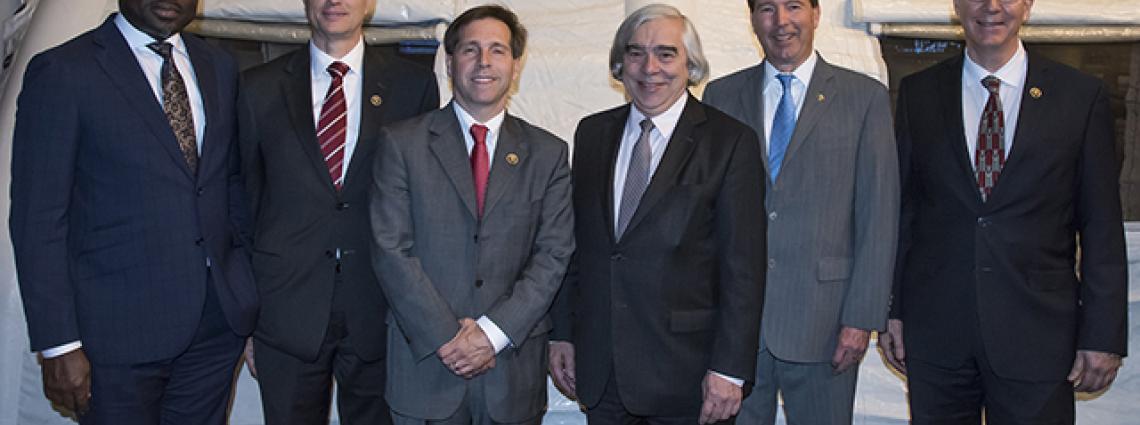Washington D.C. Event Highlights International Cooperation in Nuclear Test Monitoring Science
Washington D.C., 30 November 2016
CTBTO Executive Secretary Lassina Zerbo joined United States Secretary of Energy Ernest Moniz, along with U.S. Senators, Members of Congress, leading officials from the Department of Energy, Department of State, Department of Defense, and the U.S. National Laboratories, to celebrate six decades of cooperation in verification science.

From left to right: Lassina Zerbo, Executive Secretary of the CTBTO; Rep. Jeff Fortenberry; Rep. Chuck Fleischmann; Secretary of Energy Ernest Moniz; Sen. Tom Udall; Rep. Bill Foster (Photo: NNSA)
Nearly sixty years ago, scientific experts from eight countries, including the United States and the Soviet Union, met in Geneva to work out technical aspects of a “control system” to monitor a complete prohibition on atmospheric, underwater and underground nuclear test explosions. … The United States not only played a significant role in the negotiation of the CTBT, but also contributed, and continues to contribute, substantially to the development of the technologies associated with the Treaty’s verification regime.
From left to right: Madelyn Creedon, Principal Deputy Administrator for the National Nuclear Security Administration; David Merker, Director of Nuclear Treaty Monitoring at the Air Force Technical Applications Center (AFTAC); Al-Sharif Nasser bin Nasser, Managing Director of the Middle East Scientific Institute for Security (MESIS); W. Randy Bell, Director of the International Data Centre Division, CTBTO PrepCom; Dr. Steven Ashby, Director of the Pacific Northwest National Laboratory (PNNL)
The impressive progress since the Senate last considered the CTBT makes clear that it is time to re-examine the question of ratification. United States ratification alone cannot bring CTBT into force, but it will provide a strengthened platform to move forward major national and international security interests.
In nuclear test monitoring, we’ve progressed from BC: Basic Capabilities to the AD era: Advanced Detection, and the global monitoring network and its advanced technologies are vital to our security. These technologies have been proven repeatedly, and we can be confident in our ability to reliably and transparently detect violations of the Comprehensive Test Ban Treaty.
7 Dec 2016
